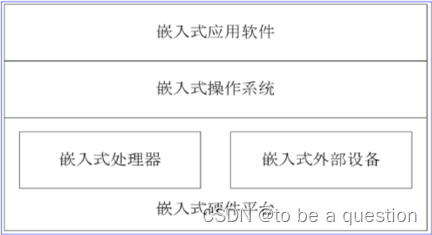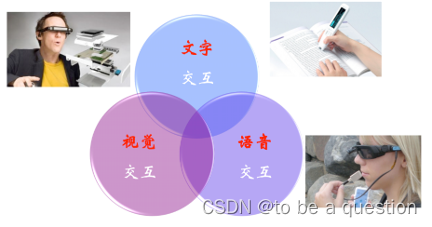2024-07-11
한어Русский языкEnglishFrançaisIndonesianSanskrit日本語DeutschPortuguêsΕλληνικάespañolItalianoSuomalainenLatina

Special-purpose computer systems for specific applications
Tailor the computer's hardware and software to the specific needs of the application
Adapt to the requirements of computer functions, reliability, cost, size and power consumption
It reflects the integration of multiple technologies such as "Internet sensor computing communication intelligent control big data cloud computing", and its core isIntelligent Technology
This indicates that hardware technology is developing towards more intelligent, more humanized interaction, and integration with the "cloud", which indicates that smart hardware will become a new hot spot in the development of the Internet of Things industry.
The "Special Action Plan for Innovation and Development of Smart Hardware Industry (2016-2018)" clearly defines five categories of smart hardware products to be developed: smart wearable devices, smart vehicle-mounted devices, smart medical and health devices, smart service robots, and industrial-grade smart hardware devices.
Artificial intelligence is a science that studies and develops theories, methods, and technical application systems for simulating, extending, and expanding human intelligence.
The goal of artificial intelligence research is to enable machines to have the ability to think, recognize and process things like humans.
The basic content of artificial intelligence research:
The six technologies that support smart hardware are:Human-computer interaction, hardware structure, software application, equipment coordination, information security and energy control
"Application innovation" is the core of the development of the Internet of Things, and "user experience" is the soul of the design of Internet of Things applications. The diversity of user access methods and application environment of the Internet of Things determine the particularity of the human-computer interaction mode of the Internet of Things smart hardware.
A successful IoT smart hardware design must carefully solve the human-computer interaction problem of IoT smart hardware according to the requirements of different IoT application systems and user access methods; many human-computer interaction ideas may even make the IoT application in a certain field.
Basic methods of human-computer interaction

Traditional keyboard and mouse input methods, as well as screen text and graphic interaction methods, are no longer suitable for the application requirements of mobile environments and portable IoT terminal devices. It is necessary to abandon traditional human-computer interaction methods and develop new human-computer interaction methods.
Wearable computing devices are used in research on human-computer interactionVirtual interaction, face recognition, virtual reality and augmented reality, brain-electric control, flexible display and flexible battery, etc.The new technology can adapt to the special needs of IoT smart hardware and plays an important role in the study of human-computer interaction technology of IoT smart hardware.
Basic concepts of wearable computing
With the development of IoT applications, wearable computing applications are currently extending and developing into smart healthcare, smart home, smart transportation, smart industry, and smart grid.
Wearable computing embodies the characteristics of "people-oriented" and "human-machine integration", as well as providing "exclusive" and "personalized" services to the wearer.
Wearable computing devices operate in a "cloud-end" mode, and the integration of wearable computing and big data technology will have a huge impact on the research and development of wearable computing devices and the application of the Internet of Things.
The main features of the first generation of robots are: fixed position, non-programmed control, sensorless electronic mechanical devices, and can only operate according to a given working sequence.
The main features of the second generation of robots are: the application of sensors improves the operability of robots. Researchers install various sensors on robots, such as tactile sensors, pressure sensors and visual sensing systems, to develop towards artificial intelligence.
The main features of the third generation of robots are: they are equipped with a variety of sensors, can perform complex logical reasoning, judgment and decision-making, have primary perception and automatic program generation capabilities, and can automatically avoid obstacles.
The main features of the fourth generation of robots are: they have the characteristics of advanced artificial intelligence, self-replication, and automatic assembly, and they are evolving from robot networks to "cloud robots".
Application prospects
Intelligent robots controlled through the Internet are showing us their super perception and intelligent processing capabilities of the world. Intelligent robots can play an important role in the application of environmental protection, disaster prevention and relief, security, aerospace, military, as well as industry, agriculture, medical care and other fields of the Internet of Things, and will surely become an important member of the Internet of Things.
The ultimate goal of developing the Internet of Things is not to simply connect things to each other, but to give birth to many intelligent devices with computing, communication, control, coordination and autonomy capabilities to achieve real-time perception, dynamic control and information services; the goal of intelligent robot research is also to pursue the robot's behavior, learning, and knowledge perception capabilities; in this regard, intelligent robots and the Internet of Things have a lot in common.
The integration of cloud computing, big data and intelligent robot technology has led to the emergence of "cloud robots". Due to the powerful computing and storage capabilities of cloud computing, a large number of computing and storage tasks of intelligent robots can be concentrated in the cloud, while allowing individual robots to access cloud computing and storage resources. This requires less onboard computing and storage for robots, reduces robot manufacturing costs, and improves the height and depth of intelligent robot applications in the Internet of Things.